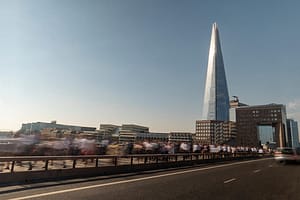Burnout is an issue for more than half of the global workforce, influenced by a combination of excessive workloads and mandated returns to office spaces that no longer meet their needs. That is according to a new study by global workplace creation experts, Unispace.
Returning for Good, a Unispace Global Workplace Insights report – which combined the results of a survey of 9,500 employees and 6,650 employers from 17 countries worldwide – found that 59% of employees often feel periods of burnout. While half revealed that the main driver of burnout is an excessive workload, a further 33% stated that the time they spent in the office was creating this problem.
With 58% also revealing that they struggle to carry out core elements of their job in the workplace at a time when 87% of employers believe people will return to the office at least four days a week in the next two years, burnout could become more prevalent unless workplaces are redesigned to suit modern workforce needs.
The data also revealed that burnout was more prevalent in the younger generation of the workforce, with 65% of 18 – 35-year-olds indicating this is an issue. This drops to 47% of the over 45s, further indicating that it is those who are not used to traditional office spaces that are struggling to adapt as office returns increase.
Julie Lecoq, Workplace Strategist and Change Management specialist at Unispace said, “Burnout across the workforce is a real concern for businesses, and we are seeing a real disconnect between employers and employees that is exacerbating this issue. Firms are increasingly encouraging people back into workplaces, however these spaces are not necessarily equipped to allow workers to feel comfortable and be productive.
“While our research does show that employees value being in the workplace for the social interaction and collaboration it brings, they are struggling with other aspects of their job – and businesses are seemingly unaware of this issue. If the mental wellbeing of the workforce is to be boosted, staff need access to a working environment that is well-balanced and supports a range of working styles and personal preferences, from collaboration to quieter focus areas.
“We also expect to see an uplift in interest for spaces that are specifically dedicated to reducing stress and burnout, such as digital free zones, outdoor spaces, and other spaces designed for rejuvenation and relaxation. At the crux of any workplace changes though, is the need for employers to understand the make-up of their workforce and speak to their people to really understand what is influencing burnout.”






Leave a Comment